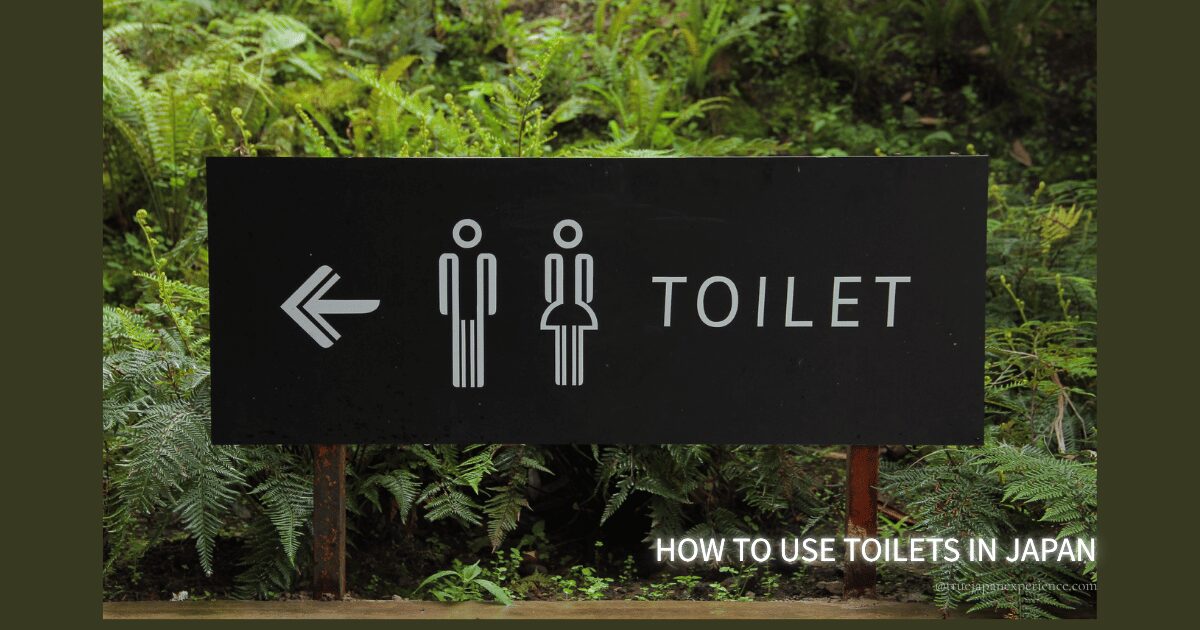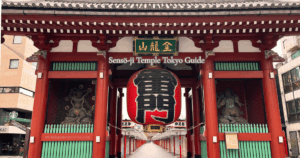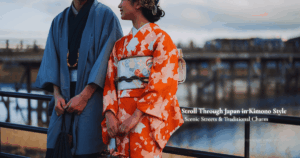Japan’s toilets often leave a lasting impression on international visitors.
From high-tech washlets to public restrooms that double as tourist attractions, Japanese toilets are clean, efficient, and full of cultural insight.
In this guide, you’ll learn how to use them, what features to expect, where to find them, and why they reflect Japan’s unique spirit of hospitality.
Why Japanese Toilets Surprise Foreign Tourists
Japanese toilets often become a talking point for first-time visitors.
What may seem completely normal to locals can be surprising, impressive, or even confusing to people from abroad.
From free public access to high-tech features and thoughtful design, Japanese restrooms reflect both practicality and cultural values.
Spotless and Free of Charge
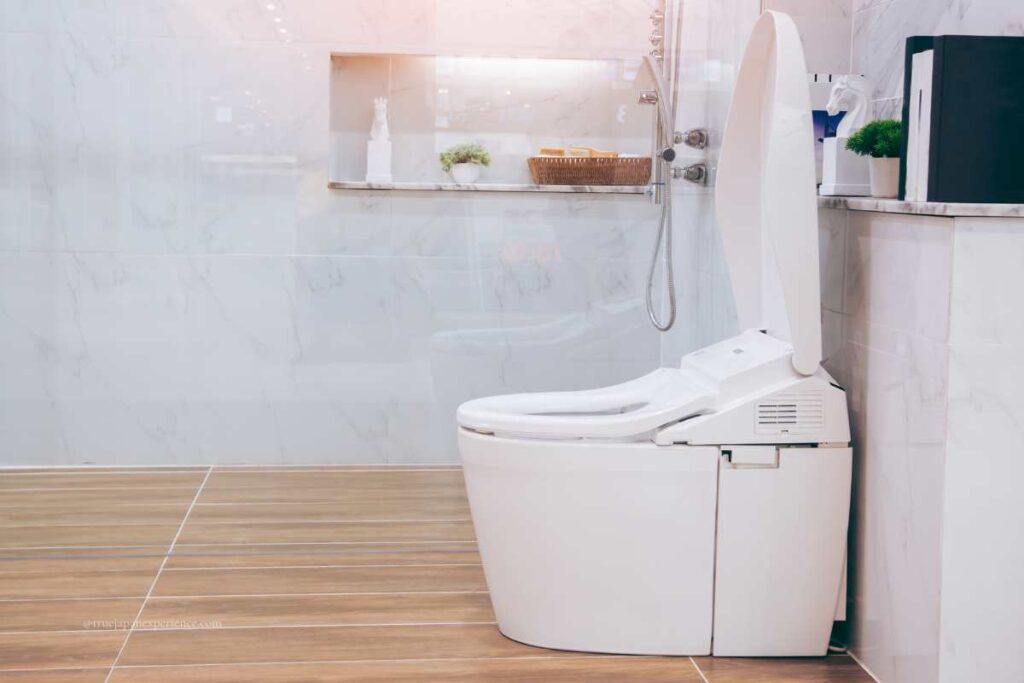
Public toilets in Japan are almost always free to use.
This includes restrooms in train stations, parks, shopping malls, and even many tourist attractions.
For Japanese people, using public toilets for free is a given.
Because they have grown up in a society where toilets are free to use, many are surprised when they travel abroad and encounter pay toilets.
There have been attempts to introduce paid toilets in the past.
For example, in the early 2000s, a few fee-based toilets were introduced in places like JR Nijo Station and near Kiyomizu Temple in Kyoto.
However, they did not gain popularity.
Because of low usage and high maintenance costs, they were eventually removed by 2012.
Today, the idea of charging for toilets has not taken root in Japan.
Instead of requiring payment, efforts have focused on improving cleanliness, accessibility, and ease of use while keeping restrooms free and available to everyone.
High-Tech Washlets and Heated Seats
Many toilets in Japan feature warm seats, adjustable water sprays, dryers, and even automatic lids.
(If you’re wondering how to use one, it’s explained in more detail in a later section.)
Tourists are often amazed—and sometimes confused—by the number of buttons on the control panel. But once experienced, many become fans for life.
I don’t actually use it myself—mostly because I don’t really like it and never felt the need for it.
Otōhime – The “Sound Princess”
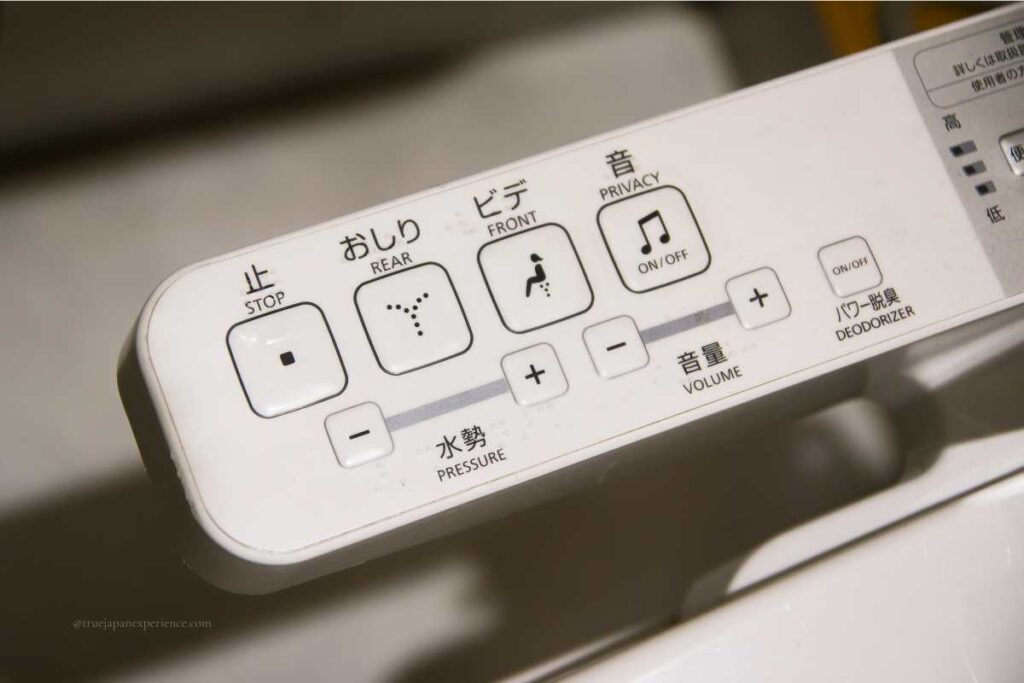
Typical control panel with wash functions and a “sound” button (Otōhime) to mask noise.
Otōhime, or “Sound Princess,” is a sound-masking device commonly found in women’s restrooms in Japan.
It plays a flushing or water-like sound to cover up any noises made while using the toilet.
In Japan, many people—especially women—feel embarrassed if others hear sounds from the toilet.
Before Otōhime was introduced, some users would flush repeatedly just to mask the noise, which wasted a large amount of water.
To solve this, the Otōhime was developed in 1988.
By playing a sound without using actual water, it allowed users to maintain privacy while saving resources.
There are two main types: one that plays a sound when you press a button, and another that activates automatically when you wave your hand over a sensor.
Toilet Privacy in Japan
One of the most appreciated features of Japanese restrooms is the high level of privacy.
Most toilet stalls are fully enclosed, with doors and panels that reach down to the floor. This design offers users a strong sense of comfort and discretion.
In contrast, many toilets in Western countries have large gaps under or beside stall doors.
Visitors from abroad often find Japan’s enclosed stalls to be more relaxing and considerate of personal space.
What About Men’s Urinals?
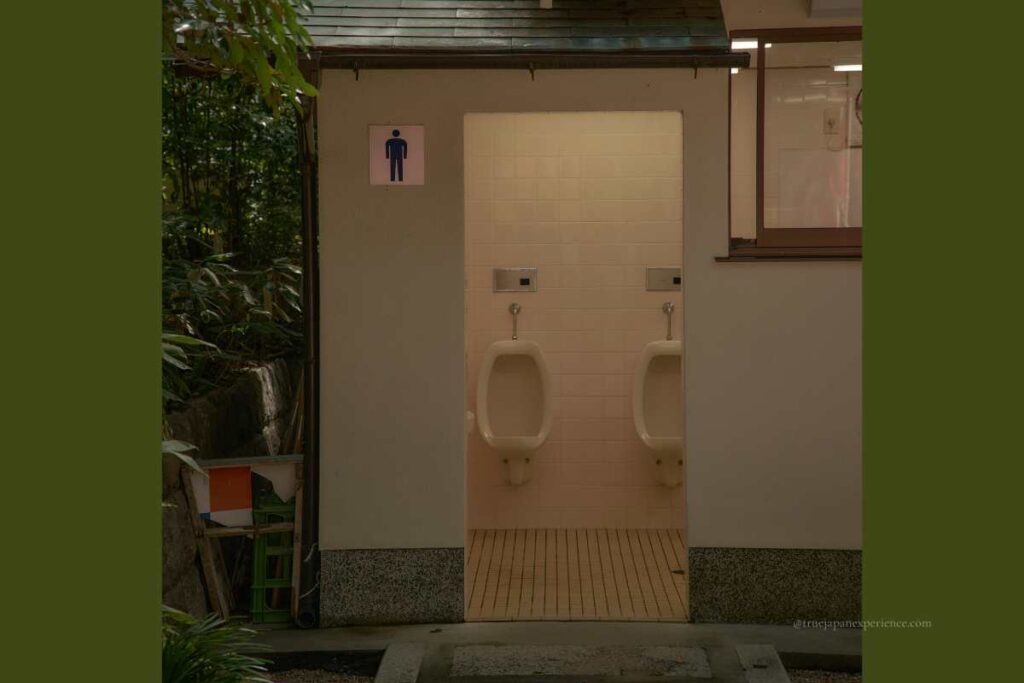
Some public restrooms in Japan have urinals that are visible even from outside the building.
Many urinals in Japan are installed without partitions or with only very low dividers.
This open layout can be surprising—or even uncomfortable—for visitors from countries where privacy screens are standard.
Although there is growing awareness about the need for more privacy in men’s restrooms, open urinals are still very common in train stations, schools, and public buildings.
Some newer facilities, especially those catering to international visitors, are starting to add partitions between urinals to improve user comfort.
While stall privacy in Japan is often praised, the contrast with open-style urinals remains a noticeable cultural difference.
How to Use Toilets in Japan: A Complete Guide for Tourists
Whether you’re visiting a big city or a rural area in Japan, you’ll find several types of toilets—some familiar, others less so.
Most places now have Western-style toilets, but some public restrooms still feature traditional squat toilets or advanced washlets with various buttons.
Here’s what you need to know to feel confident and avoid confusion when nature calls in Japan.
① How to Use Western-Style Toilets in Japan
Western-style toilets in Japan are very similar in appearance and function to those in most developed countries.
If you’re familiar with seated toilets, you’ll have no trouble using them here.
However, you might notice some extra buttons, such as sound-masking devices or various flush controls, depending on the facility.
Here are a few basic guidelines to follow when using them in Japan:
・Sit on the seat—never squat or stand on it
・Wipe with toilet paper after use
・Only flush toilet paper—do not flush tissues, sanitary items, or trash
・Use the lever, button, or sensor to flush as instructed
These toilets are standard in most hotels, shopping centers, and public facilities.
Is Toilet Paper Provided in Japanese Public Toilets?
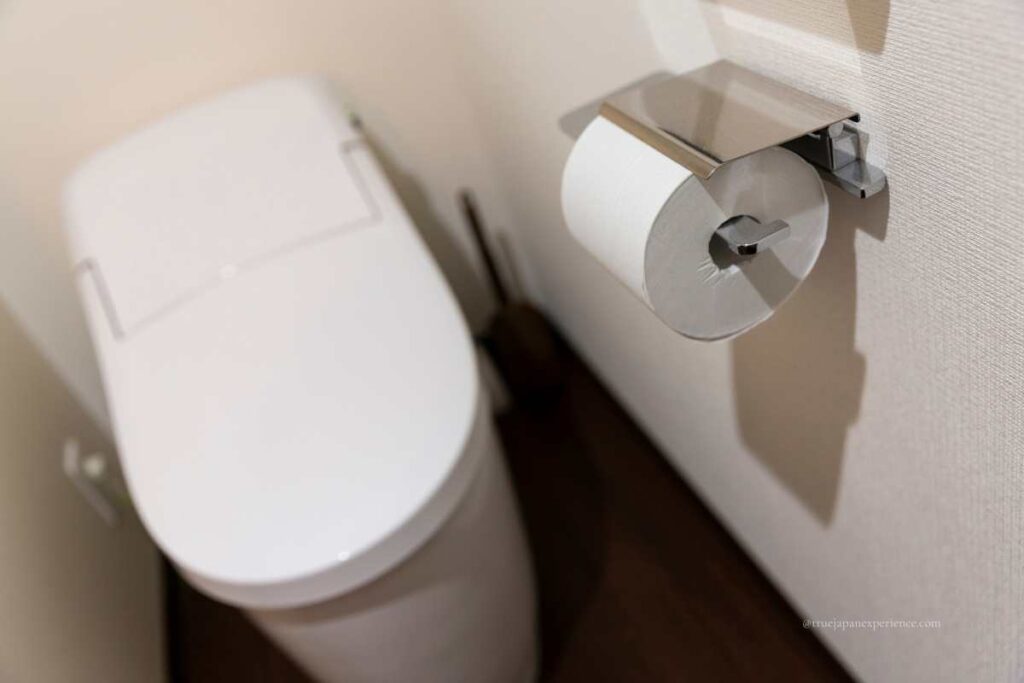
In Japan, toilet paper is available in nearly all public restrooms, including those in stations, parks, and shopping areas.
However, in very crowded tourist spots, the paper may occasionally run out.
To be safe, it’s a good idea to carry flushable tissue paper just in case.
When using the toilet, please keep these rules in mind:
・Only flush toilet paper
・If you use tissue paper, make sure it is clearly marked as “flushable.”
Do not flush regular tissue paper, even if it looks similar
・Do not flush anything other than toilet paper—this includes sanitary products, wet wipes, and any other trash
Flushing improper items can clog the toilet and damage the plumbing
② How to Use a Washlet in Japan
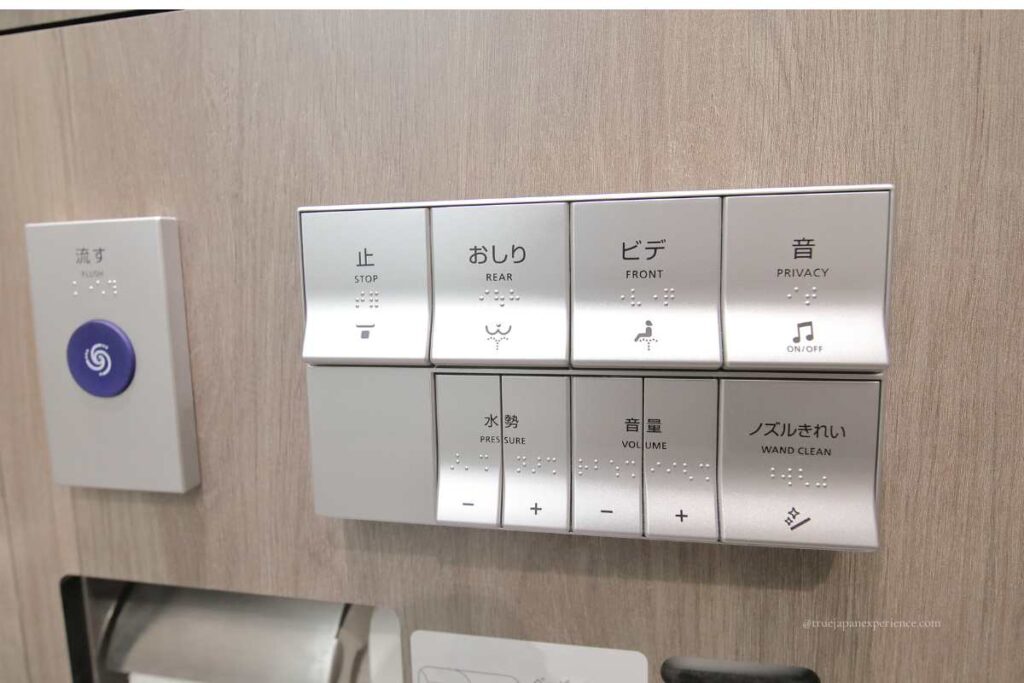
Wall-mounted washlet controls, often found in public restrooms. Functions include rear wash, bidet, and stop.
Washlets—also known as bidet-style toilet seats—are one of the most well-known features of Japanese toilets.
While the basic functions are easy to understand, the number of buttons can be a little intimidating at first.
Here are the essential things to know when using one:
・Sit back fully on the seat to ensure the spray hits the right spot and doesn’t splash
・Press “おしり (oshiri)” for rear cleansing, or “ビデ (bidet)” for feminine wash
・Press “止 (stop)” to stop the spray
・Some models include additional features like warm-air drying and automatic deodorizing
・Water pressure and temperature can usually be adjusted with nearby controls
Washlets may feel unfamiliar at first, but they are designed to be hygienic, comfortable, and easy to use.
Once you get the hang of it, you might even wish you had one at home.
③ How to Use Squat Toilets in Japan
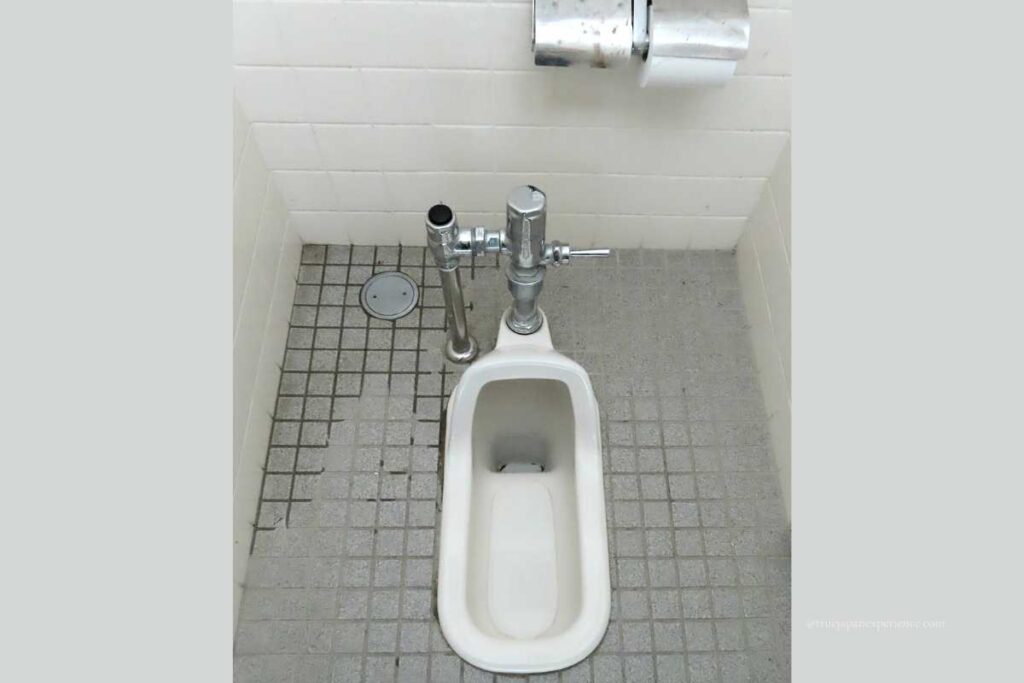
While Western-style toilets are now common in most of Japan, you may still come across traditional squat toilets—especially in parks, older train stations, schools, and some rural or historic areas.
In fact, surveys show that nearly 40% of public restrooms in tourist areas still include at least one squat toilet.
When asked about challenges they faced in Japanese public toilets, many first-time visitors said they didn’t know how to use a squat toilet.
It’s not just foreign visitors—many Japanese people today are more used to Western-style toilets, and often feel confused or unsure when they come across a squat toilet.
Here’s how to use a squat toilet correctly:
・Face the raised dome side (known as the kin-kakushi)
・Squat low over the toilet without sitting on any part of it
・Lower your underwear to around your knees for better movement
・Wipe with toilet paper, then flush using the lever nearby
・Only flush toilet paper—never flush sanitary products or trash
How to Find a Toilet in Japan: Apps, Signs, and Common Locations
Finding a toilet in Japan is usually not too difficult, especially in urban areas.
Public restrooms are more common—and cleaner—than in many countries.
Still, knowing where to look can save you time and avoid unnecessary stress, especially when you’re in a hurry or unfamiliar with your surroundings.
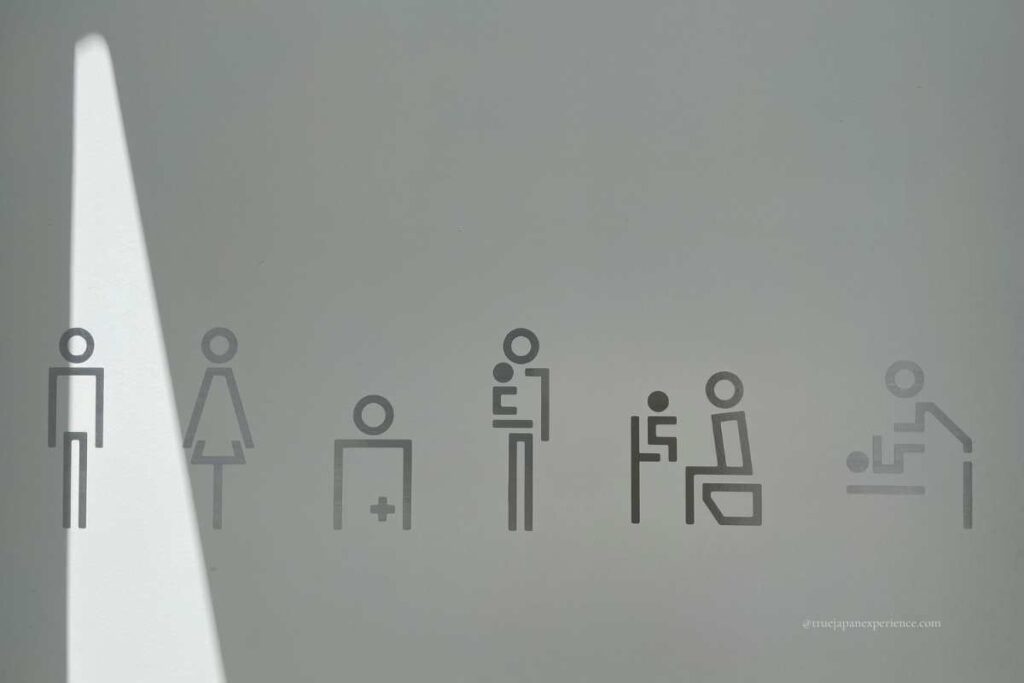
Where You Can Usually Find Toilets in Japan
Where You Can Usually Find Toilets in Japan
In Japan, public restrooms are widely available and usually free to use.
Still, if you’re not sure where to look, these are the most reliable places to check first:
When in doubt, don’t hesitate to ask someone nearby with a simple “Toire wa doko desu ka?” (Where is the toilet?).
What the Signs Look Like
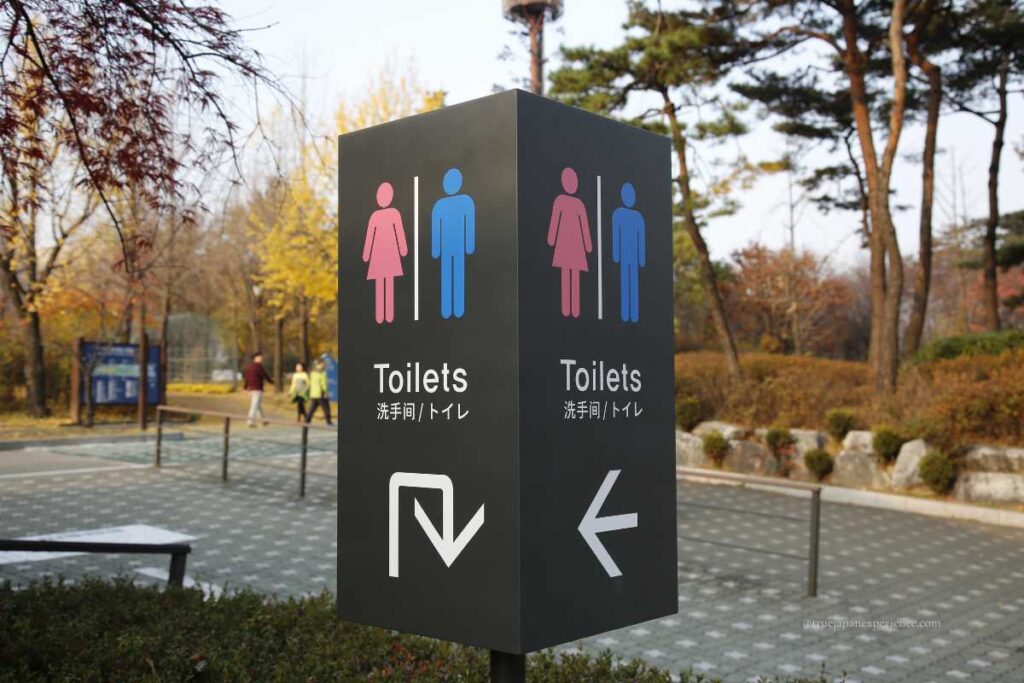
In Japan, signs often say “トイレ” (toire) or “お手洗い” (otearai).
Look for familiar pictograms showing male and female icons.
You’ll usually see the English word “TOILET” on signs in train stations, airports, and tourist spots.
While “restroom” or “bathroom” may appear in upscale hotels, “TOILET” is the most common English label.
Apps and Websites to Help You Find Toilets in Japan
If you need to find a restroom quickly—especially in an unfamiliar area—there are several apps and websites that can make the search much easier.
These tools are especially useful in busy city areas or when signage is hard to spot.
Having one of them installed before your trip can save time and reduce stress when nature calls.
Convenience Store Toilets in Japan: Rules and Current Reality
Convenience stores in Japan have long been known for their clean and accessible toilets.
In the past, it was common for many stores to allow public restroom use without hesitation.
However, this has changed in recent years.
Some stores closed their restrooms during the COVID-19 pandemic and have not reopened them.
Others have stopped offering toilet access due to an increase in visitors who use the toilet without making any purchase, especially in tourist areas.
If this trend continues, more stores may decide to restrict access altogether.
To help maintain this valuable service, please follow the etiquette below:
You don’t need to say thank you. Just buying something small shows your appreciation in the best way.
Respectful use helps ensure that this convenience remains available for everyone in the future.
How to Use Barrier-Free Toilets in Japan
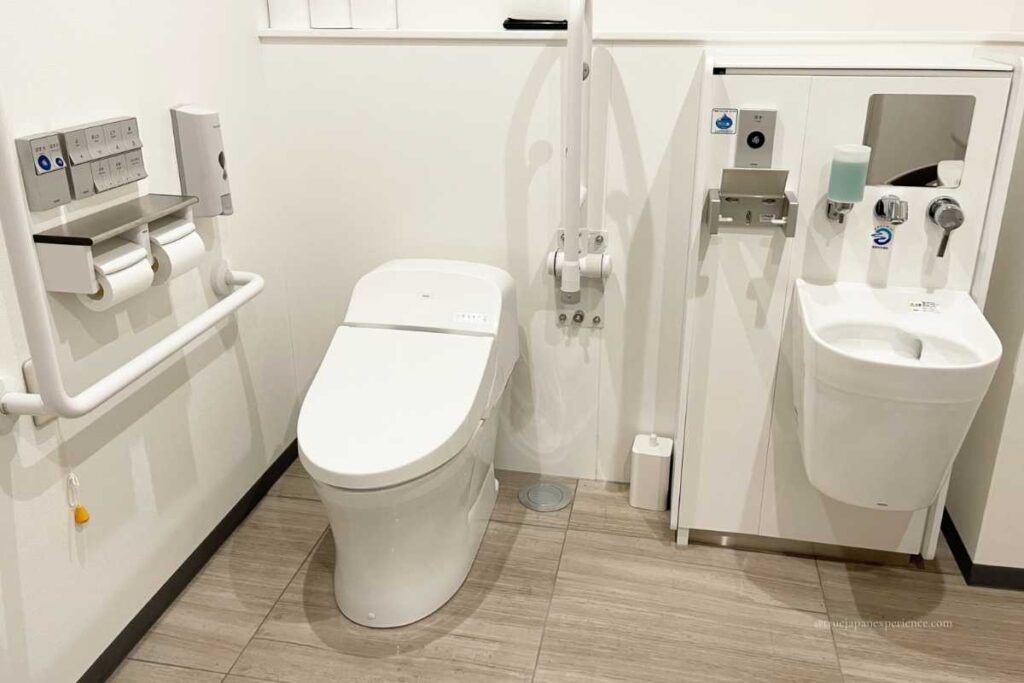
Barrier-free toilets—also known as universal or multi-purpose restrooms—are designed for people who may need extra space or assistance.
These include wheelchair users, elderly people, pregnant women, parents with babies, and those with medical needs like ostomates.
They often include wide sliding doors or automatic doors, handrails, baby changing tables, child seats, and hygiene-friendly sinks.
Some may also have special facilities for ostomates, such as rinsing sinks and shelves for medical supplies.
When using a barrier-free toilet, remember the following points:
While barrier-free toilets are designed for people who need extra space or accessibility support, they are not restricted.
Anyone can use them when necessary, but it’s polite to give priority to those who really need them.
Using them respectfully ensures they remain available for those who really need them.
What Makes Japanese Toilets So Pleasant:Clean and Odor-Free
One of the things that often surprises foreign visitors is how clean and odor-free public toilets in Japan are.
This is thanks to a combination of modern plumbing, frequent cleaning, and built-in odor control features.
Most restrooms are equipped with deodorizing systems, air purifiers, or automatic scent dispensers.
Water-flush systems are standard, and cleaning staff typically maintain facilities multiple times a day—especially in train stations, shopping malls, and airports.
Final Thoughts: Toilets Reflect Japan’s Spirit
Japanese toilets are not just about cleanliness or technology—they also reflect the country’s deeper values of hospitality, privacy, and consideration for others.
In fact, some toilets in Japan have even become sightseeing spots themselves.
From the golden, art-filled restroom at Meguro Gajoen in Tokyo, to a glass-walled garden toilet in Awaji Yumebutai, or an aquarium-themed toilet at Hipopo Papa in Akashi—these spaces blend function with creativity.
There’s even a sacred wooden toilet at Kasuisai Temple in Shizuoka, where a deity of purification is enshrined.
These unique toilets may sound unusual, but they’re a memorable part of what makes Japan’s approach to restrooms so distinctive.
Whether you’re looking for comfort, cleanliness, or a little cultural surprise, Japan’s toilets deliver much more than you might expect.
If you’d like more helpful tips for getting around Japan with ease, be sure to check out our Travel Essentials category.
From transportation and IC cards to other must-know travel basics, we’ve got everything you need for a smooth and stress-free journey.
